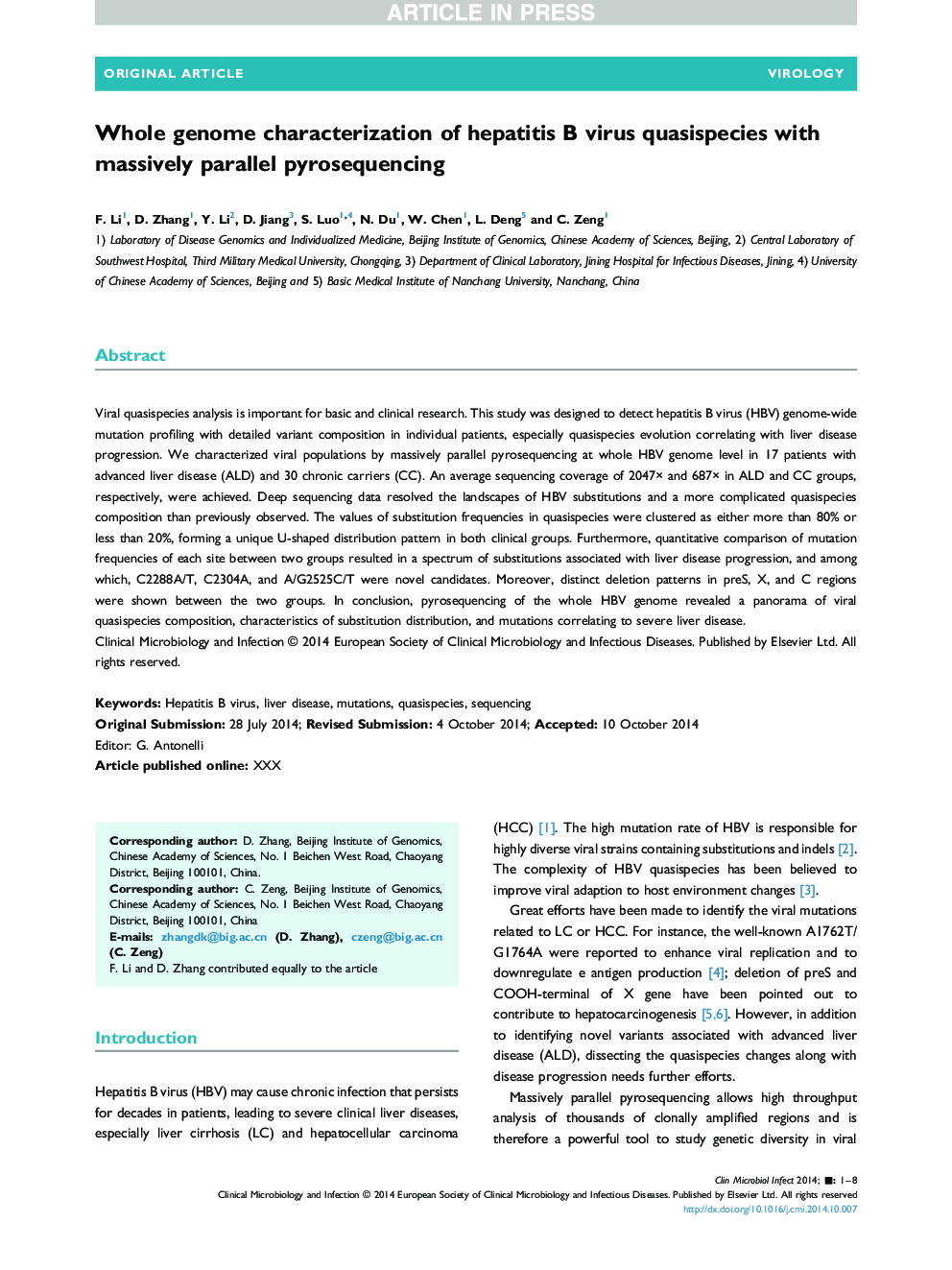| Article ID | Journal | Published Year | Pages | File Type |
|---|---|---|---|---|
| 6129250 | Clinical Microbiology and Infection | 2015 | 8 Pages |
Abstract
Viral quasispecies analysis is important for basic and clinical research. This study was designed to detect hepatitis B virus (HBV) genome-wide mutation profiling with detailed variant composition in individual patients, especially quasispecies evolution correlating with liver disease progression. We characterized viral populations by massively parallel pyrosequencing at whole HBV genome level in 17 patients with advanced liver disease (ALD) and 30 chronic carriers (CC). An average sequencing coverage of 2047Ã and 687Ã in ALD and CC groups, respectively, were achieved. Deep sequencing data resolved the landscapes of HBV substitutions and a more complicated quasispecies composition than previously observed. The values of substitution frequencies in quasispecies were clustered as either more than 80% or less than 20%, forming a unique U-shaped distribution pattern in both clinical groups. Furthermore, quantitative comparison of mutation frequencies of each site between two groups resulted in a spectrum of substitutions associated with liver disease progression, and among which, C2288A/T, C2304A, and A/G2525C/T were novel candidates. Moreover, distinct deletion patterns in preS, X, and C regions were shown between the two groups. In conclusion, pyrosequencing of the whole HBV genome revealed a panorama of viral quasispecies composition, characteristics of substitution distribution, and mutations correlating to severe liver disease.
Related Topics
Life Sciences
Immunology and Microbiology
Microbiology
Authors
F. Li, D. Zhang, Y. Li, D. Jiang, S. Luo, N. Du, W. Chen, L. Deng, C. Zeng,
